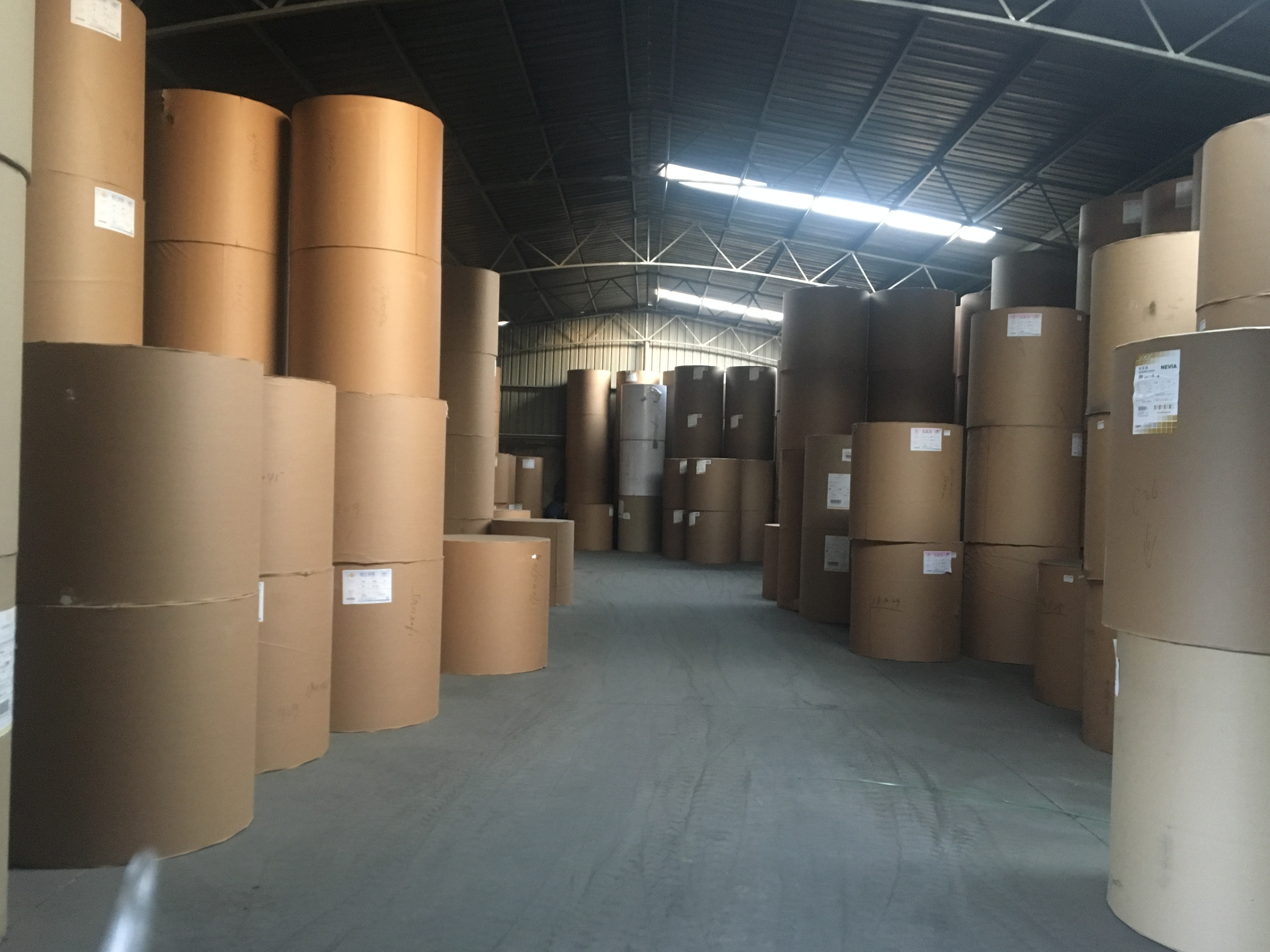Understanding Photo Paper Manufacturing
●Types of Manufacturers and Their Capabilities
There are generally two types of photo paper manufacturers that inkjet photo paper wholesalers source from. Large multinational brands like Canon, Epson and HP own their paper manufacturing plants and produce photo papers designed specifically for their own printer models. These manufacturers usually have broad product lines and rigorous quality control standards due to their global scale of operations.
Smaller specialized manufacturers focus exclusively on producing various types of universal photo papers that are compatible with multiple printers from different brands. While they may not have the R&D resources of larger brands, specialized manufacturers often have more flexibility in producing niche papers and accommodating large wholesaling orders. It's important for wholesalers to understand the capabilities and specializations of each manufacturer in their supply chain.
●Pricing Structures and Minimum Order Quantities
Inkjet photo paper pricing is typically structured based on order volume, with tiered pricing discounts applied as order sizes increase. Manufacturers usually set minimum order quantities (MOQs) starting from bulk rolls or pallet levels to container loads. These MOQs directly affect the working capital requirements and warehouse needs for wholesalers. Factors like regional taxes, shipping costs and currency exchange rates also impact the final pricing. Wholesalers must carefully evaluate each manufacturer’s pricing policies to determine the most cost-effectivesourcing strategies.
Evaluating Manufacturers

●Researching Brands, Reputation and Product Quality
Thorough research into manufacturers is essential before agreeing supply terms. Wholesalers should understand a brand's history, market standing, certifications and any industry awards or recognition. Checking reputable review sites can provide objective assessments of overall product quality, performance consistency, and reliability.
Sample testing is also highly recommended before large orders. This involves printing test images with different printers and paper settings to evaluate characteristics like color accuracy, brightness, fading resistance and texture. Any significant variances from advertised specifications could affect customer satisfaction.
●Assessing Relationships, Customer Service and Support
Equally important is evaluating the manufacturer’s partnerships and treatment of distributors. Does the company have a history of strong relationships and are previous wholesalers still in business long-term? Their willingness to cater to the needs of distributors through programs like co-op advertising, demo stock options and flexible payment terms reveals the quality of services provided.
Effective communication and issue resolution are crucial as well. Responsiveness to technical queries, fulfillment of late or incorrect orders and how product defects are handled reflects their commitment to customers. Comprehensive pre-and post-sale support with staff available via telephone and e-mail helps establish confidence in the relationship.
Thorough due diligence on these reputation and relationship factors enables informed sourcing decisions that mitigate risks down the distribution pipeline. It also lays the foundation for developing long-lasting, beneficial collaborations.
Terms of Purchase

●Payment Terms, Shipping Policies and Costs
The payment structure and associated terms significantly impact cash flow. Options may include letters of credit, advance payments or 30-60 day settlements from invoice date. Shipping cost responsibilities - whether FOB, CIF or other Incoterms - also affect budgeting. Understanding minimum shipping quantities, available carriers, typical transit times and insurance policies allows for more accurate pricing and fulfillment planning.
●Product Warranties, Returns and Claims Processes
Clear product warranties define the scope and duration of manufacturer liability. Terms should specify if defects caused by manufacturing, materials or workmanship are covered, and whether this extends to the wholesaler and end customers.
Return merchandise authorizations (RMA) protect against inventory, administration and potential loss costs from defective or incorrect orders. Know the procedures, documentation required, processing times and liability for return shipping fees.
Standard claim procedures safeguard payment for damages during transit or delivery shortages. Evaluate response commitments if claims are filed. SLAs for acknowledgements, investigations and resolution timelines demonstrate process accountability.
With international suppliers, comprehensive understanding of incoterms, local commercial laws, regulations on exports/imports, quality certifications and conflict resolution is critical to mitigate contractual and financial risks. Negotiating flexible wholesale programs with balanced protections on payment schedules, product quality and post-sale support helps lay the groundwork for stable long-term partnerships.
Inventory Management

●Forecasting Demand and Ordering Schedules
Accuracy starts with forecasting customer demand based on historical sales data, planned promotions and market trends. Buffer stocks need accounting for unpredictable variances. Order cycles should be coordinated with manufacturers’ production lead times to maintain inventory flow.
Optimal order quantities balance carrying costs of excess stock against risks of stock-outs. Planning multi-month order batches and staggered delivery windows aids this. Re-forecasting adjusts orders pending unpredicted changes.
●Storage Conditions and Rotation of Stock
Photo papers require storage between 10-30°C, away from direct light, moisture and heavy odors to retain quality longer. First expiry, first out (FEFO) rotation prevents older stock deterioration. Regular warehouse inspections monitor for improper conditions like condensation or torn packaging.
●Tracking Expiration Dates and Safety Stocks
Product tracking systems clearly label received batches, expiry dates and storage locations. Safety stocks 10-15% above projected needs safeguard against supply delays. At 50% of shelf life, markdown plans prepare stock for clearance. Expired goods must be clearly segregated for separate disposal to avoid improper resale.
Monthly expiry reports monitor fast/slow moving items. Adjustments could include promotional discounts to clear overhangs, vendor negotiations for extended dates and reserving stocks with longer shelf life for future periods. Proactive expiry management is vital to ensure products sold are always fresh and of best quality.
This covers important areas wholesalers must address regarding photo paper demand planning, physical handling and expiration control to adequately service customers. Let me know if any part needs more details.
Financial Projections

●Tracking Expiration Dates and Safety Stocks
Accurate costing builds competitive pricing. Materials costs include paper, chemicals from suppliers. Manufacturing costs cover labour, facilities, utilities. Add product insurance, freight, import tariffs, customs duties to Landed Cost. Factor in internal costs like warehousing, transport, customer service & sales commissions as cost of goods sold to calculate gross profit.
●Projecting Profit Margins and Cash Flow Needs
Project profitability based on target sell prices, customer segments, marketing strategies. Forecast gross, operating & net profit margins factors like sales growth, seasonality, price fluctuations and risks. Sensitivity analysis aids scenario planning.
Cash flow budgets project working capital demands. Account for inventory build-up before peak seasons, credit terms with suppliers & customers affecting collections & payments cycles. Cushion cash reserves to meet unplanned costs helps avoid debt reliance.
●Assessing Financial Health of Manufacturers
Vetting manufacturers’ annual reports and financial ratios gauges financial health, stability over time. Red flags include high debts, shrinking cash flows, low liquidity ratios impairing supplier payments. Financial strength supports supply continuity through demand volatility and economic downturns. Manufacturers with diversified product lines pose lesser risks than highly specialized operations.
Financial due diligence protects wholesalers’ capital and business sustainability. It underpins strategic sourcing and negotiations, optimizing supplies to adequately meet customer needs profitably over the long run. Proactive risk management avoids disruptions to cash flows and distribution networks.
Logistics Planning

●Warehousing and Distribution Arrangements
Securing suitable warehousing with climate control, ample storage, loading docks and IT systems supports inventory handling and order fulfillment. Outsourcing or leasing must factor real estate, utilities and staffing into costs.
Selecting freight carriers impacts delivery speeds and costs. Consolidating LTL shipments attains volume discounts. Dropoff and pickup schedules balance storage space usage. Order batching daily/weekly routes improves efficiency.
●Customs, Tariffs and Import/export Requirements
Comply with import/export paperwork such as commercial invoices, certificates of origin. Understand harmonized system codes, duties and restrictions on paper categories. Apply for licenses, pay tariffs and file periodic compliance statements to avoid delays or penalties.
●Mitigating Risks of Delays or Disruptions
Contingency plans address freight disruptions, supply chain hazards and disruptive events. Dual-sourcing from multiple regions provides alternatives if a plant shuts down. Forwarder relationships leverage consolidated shipments for reliability. Real-time inventory visibility and multi-depot distribution reduce stock-outs from delays.
Logistics underpins on-time performance and customer satisfaction. Forecasting freight capacity requirements in high seasons and aligning transportation and inventory levels maintains efficient order turnarounds. Proper due diligence and flexibility in the supply chain supports sustainability of photo paper wholesale operations.
Regulatory Adherence
●Manufacturer certifications and compliance
Confirm manufacturers maintain required licenses, facility registrations and product compliance certificates with authorities. These demonstrate adherence to regulations on chemicals usage, waste disposal, emissions controls, labor practices etc.
Seek proof of ISO9001, 14001, FSC or PEFC certifications covering quality assurance systems, environmental management and sustainable forestry usage. This provides assurance of responsible manufacturing processes.
●Applicable Industry Standards for Products
Understand compliance of photo papers to standards like ISO 18916 for image permanence and ISO 12647 for color reproduction accuracy. Product literature and advertising claims must be substantiated and avoid misleading customers.
●Managing Recalls, Complaints and Liability
Have policies in place to address recalls, field corrective actions or unplanned regulatory non-compliance issues. Product liability and recall insurance protects the business and third parties in such events.
Establish customer complaint handling SOPs documenting communication channels, root cause investigations, corrective actions and closure approvals. Retain records per statutory limitations periods.
Compliance with privacy, consumer protection and safety standards also mitigate legal risks. Register with mandatory industry bodies and file periodic reports as required. Audit supply chains periodically for subcontractors’ adherence too.
Regulatory landscape evolutions need continuous watch. Proactive risk management and responsiveness to issues safeguard the wholesaler’s reputation, avoid penalties and build trust among stakeholders.






